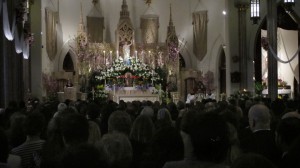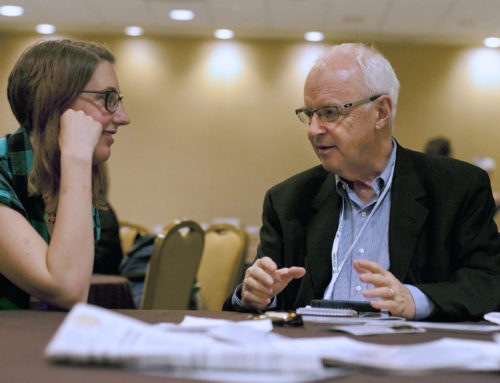At his funeral in Brooklyn, April 27, family and friends of Chris Hondros remembered him as a photojournalist with a passion for documenting the lives of people in conflict all over the world. Hondros has covered many major conflicts around the world, including wars in Kosovo, Angola, Sierra Leone, Lebanon, Afghanistan, Kashmir, the West Bank, Iraq and Liberia.
As Jennifer Calhoun said in her blog, “Chris knew his job covering war was important. He knew he was needed there to tell the stories. He did it well.”
Father Anthony J. Sansone, who presided over the service, called Hondros a “prophetic witness,†who was able to maintain the strength and courage necessary to do his work, because of the “heart of his conscience.†Sansone said, he never ran away from reality, in his life or in his pictures, so much so that in the end it even took his life from this earth.
At the service, Photography Director at Getty Images Pancho Bernasconi said, “Chris had such a good heart, even thought he saw the worst in life,â€
Chris was the kind of person who could call some 800 people to the church and another 1,000 online to watch the video stream.
His work has appeared on the covers of magazines such as Newsweek and The Economist, and on the front pages of most major American newspapers, including The New York Times, the Washington Post and the Los Angeles Times. Indeed, the day after he was killed, images he shot in Libya ran on the front page of the New York Times.
Chris graduated from North Carolina State in 1993 with a bachelor’s in English. After working for the Fayetteville Observer he eventually went to work for Getty Images. While I knew of Chris before I came to NCSU, and certainly knew many of Chris’ co-workers, it wasn’t until a few years ago that I got to meet Chris. He came to campus to speak twice as part of a campus lecture series. Each time, he met in small groups with students, talked about his work — and his time at N.C. State and what a valuable experience working on the Technician newspaper and Agromeck yearbook was. He went out of his way to be accessible, to “do lunch” and to, well, chat.
But for the masses of people who met Chris, his outgoing nature and humility, refreshing in the photojournalism field, will never be something they can experience. At least some of my students and I got to experience his openness.
“He was amazing,†said longtime friend Eric Schofield in a Fayetteville Observer article. “It didn’t matter who you were — he made time for you. He was very passionate about life and lived life to the fullest. We’re going to miss him so much.’’
For the masses of people, indeed millions, it’s his images they will remember, startling images of humankind at its worst, humankind in battle, people killing other people. I know, however, that Chris had a mission to document the lives of people affected by the conflict and the hardships they endured. He set out to document those hardships to people worldwide who remembered them and the lives they lived.
“He was always willing to give of himself,” freelance photojournalist Steve Hebert said. “That’s few and far between in this industry. For Chris, it wasn’t just about capturing an image and moving on. He was vested in these people. And it showed.â€
I agree. Even in the short time I knew Chris, I experienced his passion for photojournalism and his passion for experiencing life. He was vested in the lives of the students at N.C. State. That showed too every time he came back.
While no one now will get to share in that passion personally, his images remain. We can learn from them as much as we can learn from Chris. Those images will help us remember the best of Chris and his passion.
His images are his legacy.






Leave A Comment